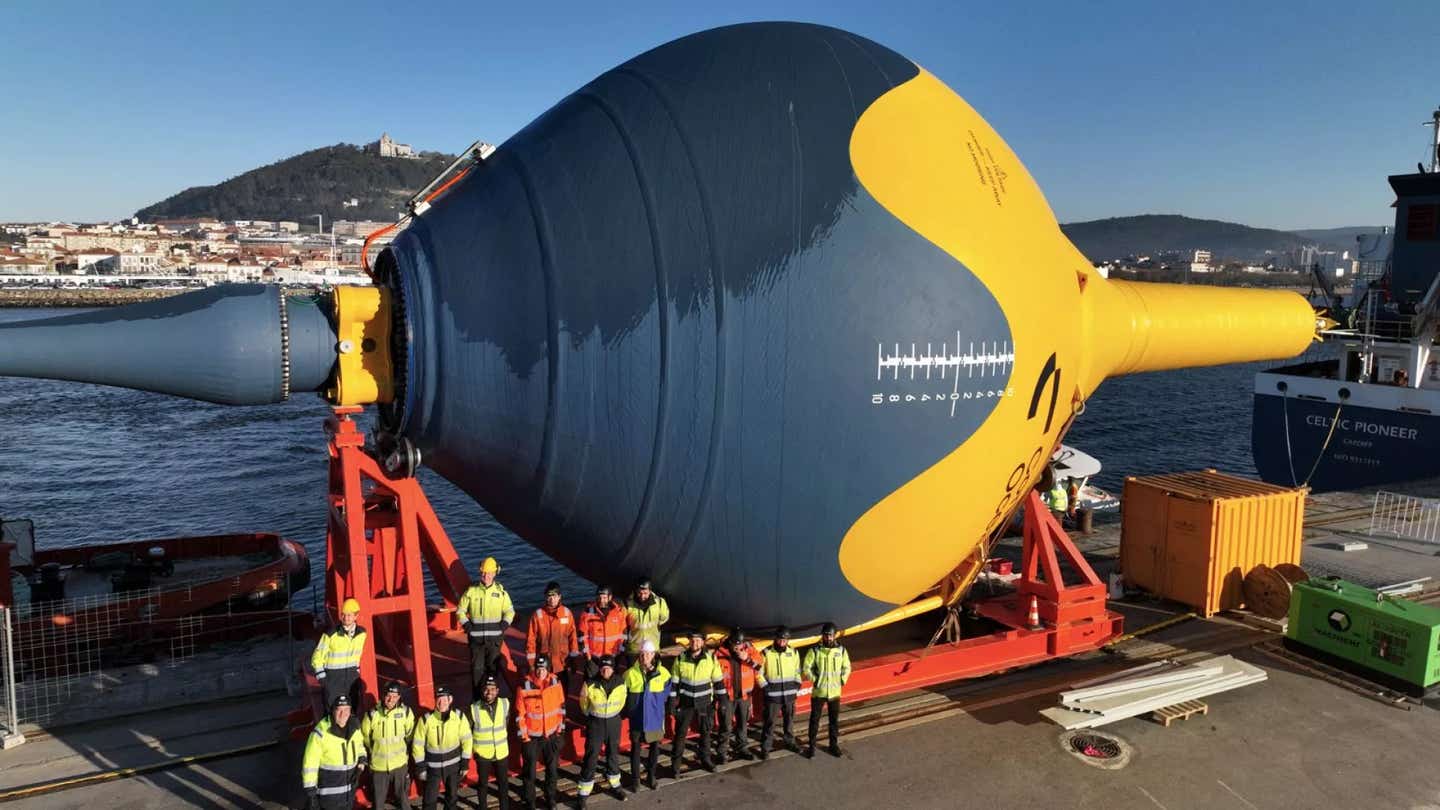Human heart shaped buoy converts wave motion into clean electricity
Oceans cover more than 70% of Earth’s surface, making them one of the largest untapped sources of renewable energy.

Advances in technology, inspired by nature, could make ocean power a key renewable source. (CREDIT: CorPower Ocean)
Oceans cover more than 70% of Earth’s surface, making them one of the largest untapped sources of renewable energy. Their potential to contribute to the clean energy transition is enormous. According to the International Energy Agency (IEA), ocean power must grow by 33% annually to help achieve net-zero emissions by 2050.
Wave and tidal energy, in particular, are promising sources of sustainable power. The Intergovernmental Panel on Climate Change (IPCC) estimates wave energy could generate up to 29,500 terawatt-hours (TWh) per year—almost ten times Europe’s total annual electricity consumption.
Tidal energy, concentrated in narrow waterways and around islands, has an estimated global potential of 800–1,200 TWh per year. Unlike wind and solar power, tidal energy follows predictable gravitational cycles, ensuring a steady electricity supply and improved grid stability.
European countries along the Atlantic, including Spain, France, and Ireland, have the most wave energy potential. Norway, with its long coastline and remote islands, is another prime location where wave energy could reduce grid costs and improve energy independence. However, despite these advantages, ocean energy remains underdeveloped compared to wind and solar.
The Challenges of Scaling Up Wave Energy
While waves contain the highest energy density of any renewable source, converting them into electricity at a commercial scale remains a challenge. Wind and solar have demonstrated consistent cost reductions and reliability, but wave energy technology is still evolving.
"The key challenge is competitiveness," explains José Miguel Rodrigues, a senior research scientist at SINTEF, one of Europe’s largest research institutes. "Wave energy faces demanding requirements for both consistent performance and the ability to withstand extreme ocean forces. Many prototypes have failed or underperformed, while offshore wind and solar have demonstrated reliability and cost reductions."
For wave energy to become commercially viable, it must balance technological feasibility, economic viability, and social acceptance. Infrastructure investments, government incentives, and advances in energy storage could help accelerate its growth.
Related Stories
Biomimicry in Wave Energy: Learning from the Human Heart
Inspired by the mechanics of the human heart, Swedish company CorPower Ocean developed an innovative wave energy converter known as CorPack. Co-founded in 2009 by heart specialist Dr. Stig Lundbäck, the company sought to mimic the heart’s hydraulic pressure system to create a more efficient energy capture method.
The CorPack device is a large, lightweight buoy that converts wave motion into stable electricity. Much like the heart pumps blood in one direction using hydraulic pressure, CorPack applies tension to pull the buoy downward as waves push it upward. This oscillating motion is converted into electricity using generators.
A spokesperson for CorPower Ocean explains that this approach allows for high energy efficiency. "Our converter delivers 300 kW, producing more than five times as much electricity per ton of equipment compared to previous wave energy technologies."
Rodrigues considers CorPower Ocean's progress significant. "They've secured investment and EU research grants, allowing them to develop a working device. Successfully deploying a full-scale unit in Portugal is a major achievement given the limited funding available for wave and tidal energy in Europe."
The CorPower Ocean wave energy converter is now connected to the Portuguese grid near Aguçadora. Other companies are also making strides in wave energy, including Italian firm ENI with its Inertial Sea Wave Energy Converter, China’s floating Nanku generator, and Finland-based AW-Energy’s WaveRoller, which uses underwater panels to capture energy.
The Future of Wave Farms
CorPower Ocean’s technology is based on "point absorber" wave energy converters. These compact devices, anchored to the seabed with tensioned mooring systems, absorb energy from wave movement. Their novel phase control system ensures they oscillate in sync with incoming waves, amplifying motion and power capture.
This design enables five times more energy production per ton of equipment than earlier wave energy technologies. The high structural efficiency means that energy is harvested using smaller, lower-cost devices, reducing both capital (CAPEX) and operational (OPEX) expenses.
Using established grid connection methods from the wind industry, CorPower's technology optimizes 10 MW clusters of wave energy converters. The electricity generated by each cluster is collected and delivered to the grid via a standard 33/66 kV connection, commonly used in offshore wind farms. This integration allows wave and wind energy projects to share infrastructure, improving energy output and cost efficiency.
Mass production is key to making wave energy cost-effective. The array design—comprising many small, interchangeable units—enables economies of scale. A maintenance scheme based on replacing entire units or conducting simple offshore repairs improves uptime and reduces costs. Since the devices are compact and relatively inexpensive, spare units can be kept on hand for rapid replacement.
A Stepwise Approach to Commercialization
To ensure reliability and economic viability, CorPower follows a structured five-stage product verification process. Developed in line with best practices from the International Energy Agency-OES and Wave Energy Scotland, this approach mitigates risks at early stages before scaling up.
- Stage 1: Concept validation using small-scale models in test tanks and early component testing.
- Stage 2: Critical systems verification through mid-scale testing and drive train assessments.
- Stage 3: A half-scale wave energy converter underwent rigorous dry testing in Sweden before ocean deployment at the European Marine Energy Centre in Scotland.
- Stage 4: The first full-scale CorPower Ocean converter was tested in Portugal and connected to the national grid.
- Stage 5: The company is now working toward deploying a full-scale pilot array, demonstrating a fully integrated wave farm.
Each phase involved extensive testing, debugging, and optimization. Dry testing allowed control and safety functions to be fine-tuned under simulated storm conditions before real-world deployment. This method improved the device’s reliability, ensuring successful operation once placed in the ocean.
The Path Forward
Wave energy is still in its early stages, but companies like CorPower Ocean are proving its potential. By integrating biomimicry, scalable manufacturing, and advanced control systems, these technologies could soon complement wind and solar in the global energy mix.
With stronger government support, continued research funding, and advances in cost efficiency, wave power could become a key player in the transition to renewable energy. If its challenges are met, the immense energy potential of the ocean could finally be harnessed to power homes and industries worldwide.
Note: Materials provided above by The Brighter Side of News. Content may be edited for style and length.
Like these kind of feel good stories? Get The Brighter Side of News' newsletter.
Joshua Shavit
Science & Technology Writer | AI and Robotics Reporter
Joshua Shavit is a Los Angeles-based science and technology writer with a passion for exploring the breakthroughs shaping the future. As a contributor to The Brighter Side of News, he focuses on positive and transformative advancements in AI, technology, physics, engineering, robotics and space science. Joshua is currently working towards a Bachelor of Science in Business Administration at the University of California, Berkeley. He combines his academic background with a talent for storytelling, making complex scientific discoveries engaging and accessible. His work highlights the innovators behind the ideas, bringing readers closer to the people driving progress.



